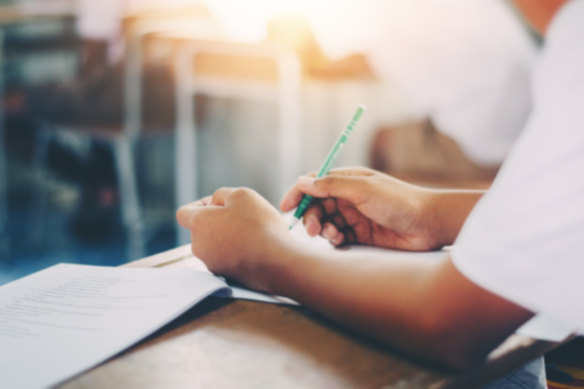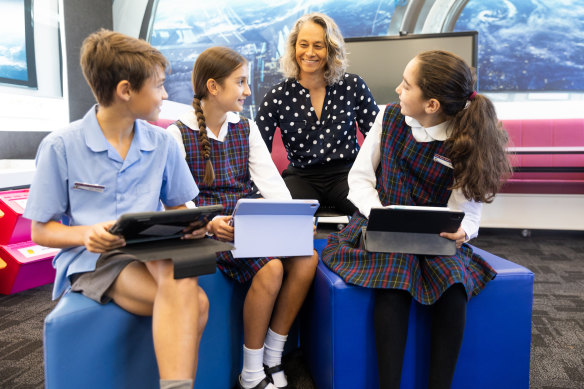By Jordan Baker
Academic disruption during the pandemic hit NSW high school students harder than their primary-aged counterparts, with test results showing they fell further behind in reading and numeracy than younger children during the Delta lockdown last year.
The results of the tests – sat when students returned to face-to-face learning in term 4 last year – are the first to measure how students progressed academically after remote lessons in 2021.

COVID lockdowns have affected the test results of students.Credit: Shutterstock
They show that when students in year 7, 8 and 9 arrived back at school, they were further below the numeracy level they would have been expected to reach if schools had remained open than younger year groups. Year 8 was also below their expected learning trajectory in reading.
“Overall, check-in reading and numeracy results for secondary year levels are below the expected trajectory,” the report said. “This suggests that learning loss was more pronounced in the secondary grades during the second half of 2021 due to COVID-19.”
The report did not cover reading results for years 7 and 9, and did not specify how far these students fell behind.
School education program director at the Grattan Institute Jordana Hunter said the data for students in year 6 and above was “pretty worrying”.
“On average, these students appear to be many months behind where they should have been in their learning by term 4,” she said.
The department’s research team used results of so-called check-in assessments – held at several points in the pandemic – and NAPLAN results to predict the learning trajectories that would have been expected without lockdowns, and then compared them with how students actually performed.
The 2021 NAPLAN tests – held in May, before the extended Delta lockdown – showed literacy and numeracy skills had not suffered much despite seven weeks of remote learning early in 2020. However, the new data showed that missing more than a term of face-to-face learning last year hurt older students more than younger ones.
In numeracy, years 4 and 6 continued to progress as they would have without the lockdown. Year 3 did even better than expected, which “indicates that these students experienced minimal learning loss in the second half of 2021 due to COVID-19,” the report said. Year 5 did slightly worse.
Years 7, 8 and 9 had been on track in numeracy before lockdown, but were behind in their progress when classes resumed in October. In reading, year 6 was on track in term 2 last year but fell behind by term 4. Year 8 was already behind its expected trajectory in term 2 and fell further behind in term 4.
The NSW Department of Education data reflected the performance of students across the state and did not include detail on whether students in particular locations or those facing greater disadvantage suffered more.
The check-in assessments were introduced during the pandemic to measure learning loss in literacy and numeracy only, and teachers preferred them to NAPLAN because the results were available in 48 hours.
Education Minister Sarah Mitchell said teachers used the results to target students’ weaknesses.
“The NSW government’s $720 million COVID Intensive Learning Support Program is also making use of the check-in data, to boost learning through targeted small group tuition, which has already helped 265,000 students since it was first introduced a year ago,” she said.
The department was developing more check-in assessments, which will “expand beyond reading and numeracy to support teachers to implement the new NSW curriculum,” Mitchell said.
Dr Hunter said it was not surprising learning took a significant hit, but recovery was possible.
“Helping these students catch up must be the top priority for NSW schools. If we fail, these young people are at risk of experiencing a nasty long-term COVID hangover.”

A fan of check-ins: Felicity Williamson with students Budd Corser, Emily Walsh and Jayla Mougios.Credit: Edwina Pickles
The Assistant Principal, Curriculum and Implementation at Sans Souci Public School, Felicity Williamson, said the check-in assessment was useful in not only measuring how students had fared during remote learning, but also in pinpointing the areas in which they struggled.
“Once you implement the assessment you get feedback straight away,” she said. “Then we triangulated all our data, and now we’ve got some programs in place.”
The Opinion newsletter is a weekly wrap of views that will challenge, champion and inform your own. Sign up here.